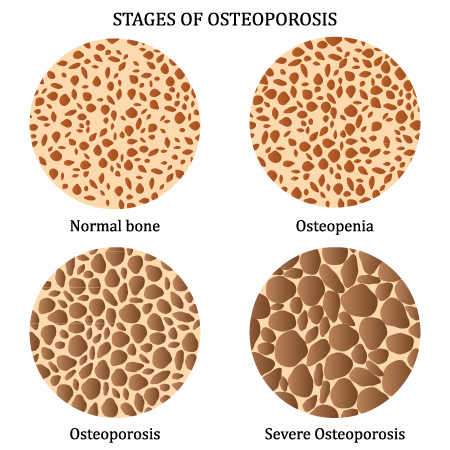Avoiding fractures and osteoporosis in jockeys
Based on current WHO [World Health Organisation] classifications 53% of of flat and 10% of national hunt jockeys showed whole-body osteopenia; 12% of flat jockeys were osteoporotic (Warrington et. al. 2009).
From this study alone jockeys need to assess what they are doing to protect and strengthen their bones. Falling off horses at 60 kilometres per hour means breaks and fractures in some instances are unavoidable. However the severity can be minimised by ensuring your bones are the strongest they can be. Genetics, exercise, hormones and nutrition all play a role. Today I am going to talk about the nutritional side of things. In relation to micronutrients calcium and vitamin D are the main nutritional components that make up our bones. When requirements aren’t met our bone health is compromised. Also when you are in chronic energy deficit, as many jockeys are, the ability for you to reach peak bone density is compromised.
“Horse racing is a high-risk sport, with soft-tissue injuries and fractures the most common reported injuries experienced by jockeys through participation in their sport” (McCrory, Turner, LeMasson, Bodere, & Allemandou, 2006; Waller, Daniels, Weaver, & Robinson, 2000 cited in Warrington et. al. 2009).
“Results show that 59% of flat and 40% of national hunt jockeys had whole-body, hip or lumbar spine osteopenia. These results are comparable to those reported by Leydon and Wall (2002), who observed osteopenia in 44% of the New Zealand jockeys” (Warrington et. al. 2009).
Jockeys are at risk of inadequate calcium intake and vitamin D deficiency. Why? Many jockeys eliminate dairy from their diet to help reduce calories or just simply do not eat enough, and therefore cannot meet their calcium requirements. Even more apparent on race days where many do not eat at all. In regards to Vitamin D your sun exposure is limited due to early morning trackwork, nil sun, and being covered up from head-to-toe on race days. Not to mention we have to be careful of the sun in regards to skin cancer. I would definitely recommend for all jockeys to have their vitamin D checked annually, speak to your doctor for blood tests. Food sources rich in calcium are dairy and tofu. Vitamin D is made from UV rays hitting your skin. So sun exposure is important. You do not absorb much vitamin D from food nor could you possibly meet requirements when restricting your diet as weight classed athletes.
As a side note, the darker you are the longer you have to sit in the sun to produce the same amount of vitamin D. If you are Lebanese, Egyptian, Islander or naturally have dark/olive skin, you are at even higher risk of vitamin D deficiency. Low vitamin D does not only effect your bone health but mental health.
So to ensure you reach peak bone density at the age of 28-to-30-years you need to ensure your calcium intake is met daily and your vitamin D levels are within ranges. Otherwise putting you at risk of osteoporosis. As you can see from the above quotes, researchers have found that jockeys either have or are at risk of osteoporosis. You may laugh at this as some of you are teenagers or in your early 20’s but the research conducted were in individuals aged 20.5-34.1 years (Warrington et. al. 2009). So it’s time to stop and think about your bones. Not waiting for fractures and breaks to occur but ensuring you are meeting requirements from the start of your apprenticeships.
Just think…breaks and fractures means loss of rides and income. So It matters!
How much calcium do I need?
You need 1300mg/day of calcium for those aged 16-18 years old and 1000mg per/day for those aged 19 years and above. Not once a week but daily including race days. Retired jockeys 70-years and above need 1300mg/day.
What that looks like in your food consumption…
At trackwork: skim latte regular (250mL milk = 300mg calcium) and 200g Low Fat Greek Yoghurt (488mg)
B'fst: 2 eggs on toast (42mg)
Lunch: 90g Pink Salmon tin + salad and 1/2-1C rice (280mg)
Snack: 10 almonds (30mg)
Equals 1140mg...
For more information about how much calcium is in foods here is a table from Osteoporosis Australia.
Milk alternatives & ones to avoid
If you're not one to drink cow's milk due to taste, intolerance or being vegan there are things to consider when choosing the right milk alternative. Almond, cashew, coconut, oat and rice milks are naturally low in calcium so it is important to check they are fortified. This means the manufacturer has physically added calcium into the product to be sold as a milk alternative.
If your milk alternative is organic its probably not fortified. How do I check? Simply go to the 100mL column of the nutrition information panel. Scroll down to calcium. You want it be 120mg of calcium or greater per 100mL. If calcium is not there it has not been fortified and I would not recommend using this milk.
Take Vitasoy Soy Milk below. It has 120mg of calcium per 100mL.
If you still feel that you cannot meet your calcium requirements a supplement may be appropriate for you. However before starting one speak to a dietitian. If you would like some help or want to ask me a question, please email me megan@jockeynutrition.com





